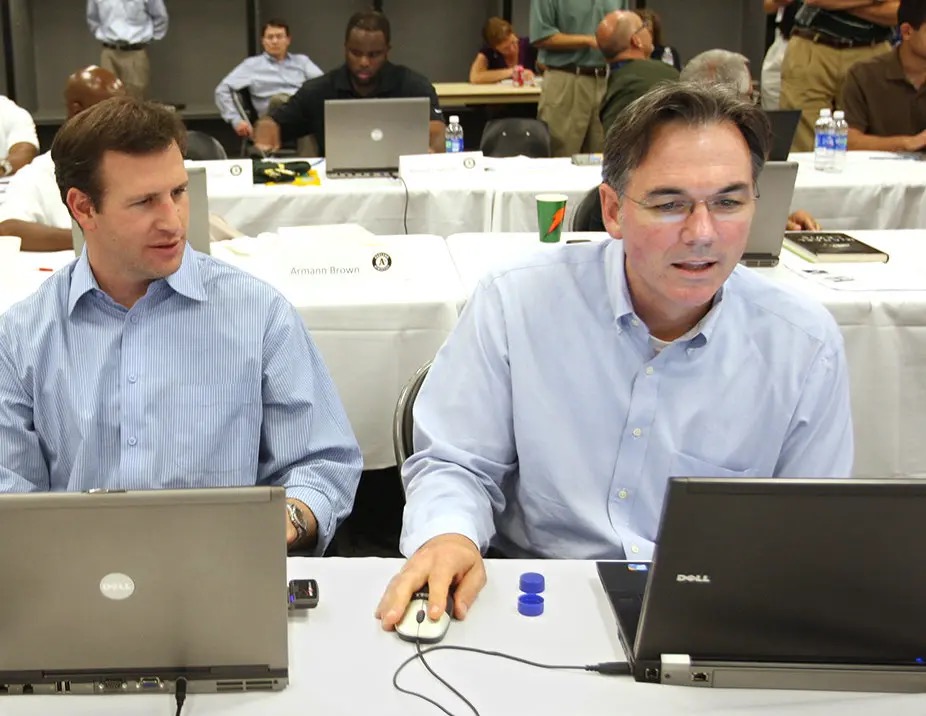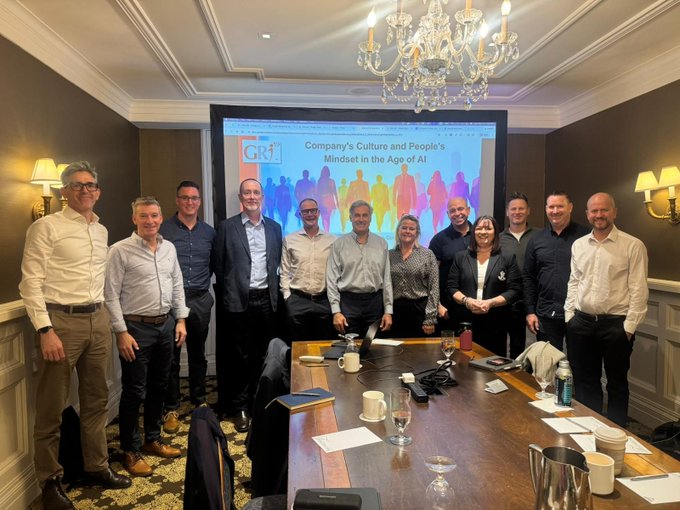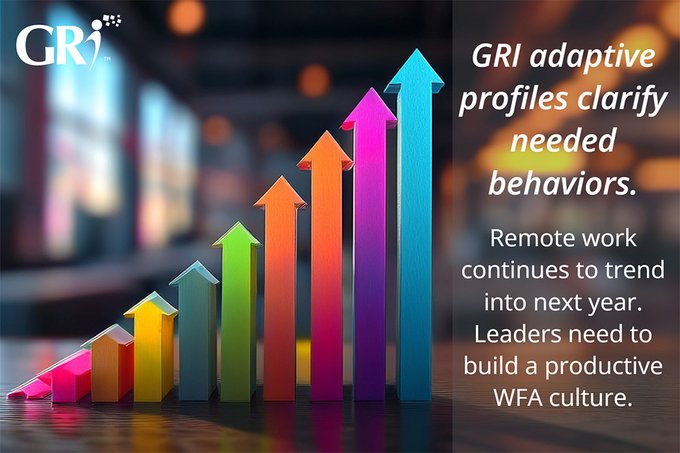Moneyball for Companies: The Making of GRI's Metric
Posted by Frederic Lucas-Conwell

Moneyball for Companies: The Making of GRI's Metric
In the late 1990s, the Oakland Athletics baseball franchise was on the decline. Once a powerhouse team boasting a 1989 World Championship win, its star players were being traded away, ticket sales were shrinking, and fans were beginning to lose faith. Billy Beane, who became general manager in 1997, struggled to find an antidote for the failing franchise or a cure for the team’s low morale. But once Beane looked at player stats in a completely different light, he began recruiting and trading players much differently than other Major League Baseball (MLB) teams-in a way that utilized the players’ incredible hidden talents.
The transformation of the A’s from the laughing stock of Major League Baseball to a world-class, record-breaking franchise—a comeback story famously chronicled in Michael Lewis’s book Moneyball, and later valorized in the film of the same name—is almost beyond belief. But there’s a simple formula at the heart of this rags-to-riches success story: the power of people data.

Billy Beane and David Forst during the 2010 draft. (figure 2)
Instead of relying on the gut intuitions of scouts and traditional metrics of performance, Beane tapped into sabermetrics (also known as moneyball) and began selecting players based on new observations and previously overlooked statistics—primarily a player’s on-base percentage and slugging percentage. This radical new approach of assessing a player’s value changed the game forever and ultimately led to 20 consecutive game wins in 2002, helping the A’s tie for the longest winning streak in American League history.
The Need for a New Metric about People
Companies have a lot of data at their disposal for making decisions about people: years of experience, scores from competency and value surveys, GPA scores, and many other Key Performance Indicators (KPIs) once on the job. But could new metrics dramatically change organizations and their people as moneyball did for the A’s in the early 2000s?
New data about people can prove useful, not always upon finding, but when used out of necessity to do more with less in a competitive environment—sometimes years after the data is discovered. For the A’s, the principles of moneyball emerged thanks to the audacity of people like Beane, even when the data was not popular yet.
Looking back, moneyball actually existed long before the A’s used it to change team metrics. In fact, the first book published on the subject in 1964 called Percentage Baseball was dismissed by most professionals as meaningless. And while moneyball was introduced to the A's in the early 1990s under General Manager Sandy Alderson, it took the work of Beane and his assistant Paul DePodesta to prove its value years afterward, albeit during some of the A’s most challenging times.
At Growth Resources, we created the GRI (Growth Resources & Indicators) metric after experiencing what it’s like to recruit and manage people in both small and large global companies, and after studying hundreds of assessment techniques and their impact on organization performance. We gathered, synthesized, and refined vast amounts of information from the social science and management fields, plus we combined more than twenty years of observations with on-the-ground research, interviewing nearly 1,100 people in 500 companies across five continents.
To put things in perspective, the omnipresent challenges with people in organizations cost billions of dollars each year, and that’s why we envisioned a way companies could evaluate their people using better metrics. We created the GRI to reveal the talents and motivations of individual employees and potential job candidates; in essence, it serves as a revolutionary tool to help improve organizations and their employees at both individual and corporate levels.
The GRI also reflects a growing need for better resources to develop people and leadership based on quality data. As a result, GRI's approach is personal, nuanced, and offers everyone and their organizations the opportunity to succeed on their own terms.
Engineering GRI'S New Metric
Data gathering in relation to personality is far from being a new thing. Natural intuition and techniques such as tea leaf readings and astrology have been used for millennia. Additionally, countless books and academic articles have been written on personality since the early 1900s. The US military and large corporations have used trait assessments for recruitment since WWI. Executive coaches have increasingly been using typologies in coaching and team building since the 1980s. And so on.
As far as people data, time helps us get wiser about what the data reveals and how it needs to be used. For more than a century, numerous experiments have been conducted with personality assessments, providing evidence of what works, what doesn’t work, and what their limitations are. For instance, correlational studies used to be popular at a time when trait assessments were thought to predict job success, but with little regard to any other variable. In practice, the "no other variable" condition never happened and correlational studies lost their popularity.
Many systems used in coaching and business today assign types to people, labeling them things like “maverick” or “realtor.” Others, like the highly popular Myers-Briggs Type Indicator, use acronyms such as “ISTJ” or “ESTP” to identify personality types. But these systems lack accuracy and work-relatedness, are often misleading, and can’t even be used for interviewing or hiring candidates.

Nick Swishergains a hit, 2005. (figure 3)
Altogether, personality trait assessments and personality type assessments haven’t been able to provide us the key information–the home run we’ve been looking for. But when we use the GRI to assess core personality factors at various levels such as individual self, role, job, team, company, and beyond (with a visual representation), we discover data that can be used to coach and train in effective and memorable ways.
Besides time, technology has played an important role in discovering people data so we can make sense of it at an organizational level. Unlike decades ago, today we can conduct advanced statistical studies and display, analyze, and learn about people data with efficiency and ease. Technology has also provided a unique chance to work with companies that are under intense pressure to grow and be a part of a worldwide ecosystem of executives, engineers, marketers, investors, lawyers, consultants, and other professionals striving for success.
When we started the GRI, our vision was to provide both objective measurements and a common language describing how to understand core aspects of someone’s personality—tools that can be valid and practical for many applications. The GRI was further designed to extend our natural ability in understanding people and helping leaders make more effective, positive decisions about the personnel and organizations they run.
Growing Expertise in the New Metric
Building an assessment such as the GRI survey requires a fair amount of work: collecting data, running statistics, and more. But there are many other considerations that go into it, just like when putting together a winning baseball team. When we built the GRI, we were concerned with what it measured, how the results were displayed and explained, who used the results, and how one could become fluent in the language created from the results. We knew all these elements would have a significant impact on the GRI’s efficacy within an organization.
Today, we are grateful that we were able to quickly build a robust roster of client companies, executives, consultants, and HR experts who conducted further observations with the GRI and how it deploys into organizations. Whatever our diverse origins, we all share an undivided interest in finding more effective ways of recruiting and managing people. Putting the GRI to work in various situations such as recruiting, managing, coaching, team building, and company building while sharing the lessons learned has not only brought further evidence of the GRI’s benefits, but it’s helped us consolidate new expertise in people data.
GRI's metric continues to evolve based on feedback from the thousands of people and hundreds of companies worldwide that have implemented the system within their organizations. We’ve also continued to improve the GRI by practicing what we preach and applying the system to our own needs at Growth Resources.

The A’s celebrating a 20-game winning streak, 2002. (Figure 4)
When you think about baseball, looking for more home runs and wins isn't just centered on the players; it requires the experience of everyone involved, including management. Moneyball wouldn't have benefited the A's in the first place without Beane's determination and long-term experience in baseball, in addition to the collaborative efforts of the coaching staff and the team. In the same way, being successful with new metrics about people requires both the environment and the leadership to deploy it. And this is the case with personality data that applies to all levels of an organization—from the bottom to the top.
A New Metric to Re-learn about People
Knowledge of people takes time to develop. Paradoxically, our intuition is the most ancient kind of knowledge that has lived within us since our own inceptions. But taking that core-level knowledge of people to the next tier is hard work that requires not only more accurate metrics, but a process for learning that combines mentoring, training, and support.
When managers widen their perspectives and change how they assess the value of their team members, they begin to discover strengths and advantages where they never thought to look before. That same logic can apply to managers themselves as well as everyone in an organization, unlike sabermetric data which applies only to baseball players.
Finding the right people to propel an organization forward can take months (if not years), and oftentimes, hiring the right talent isn’t enough if that talent is placed in the wrong role or put on the wrong team. And when working as an executive, manager, or human resource representative, one can be acutely aware of just how hard it is to staff and manage teams successfully. But if we look at the accomplishments of the Oakland A’s during their comeback years, we know that new metrics can be powerful instruments for finding, cultivating, and retaining talent.
Discovering natural strengths within ourselves and others requires time, patience, and introspection. The GRI speeds up this process, removes the biases of judging talent based on intuition only, and puts an individual’s strengths in better alignment with the expectations of others–especially when the individual needs to meet specific job requirements with a team or manager.
Through the GRI seminar’s five-step process, executives, managers, and HR experts are essentially able to re-learn about people as well as discover unique aspects of the GRI that make it such a compelling and transformative system. For example, the GRI can give leaders and HR specialists a set of skills detailing how best to design and staff an organization’s teams. It can also show how to strategize growth while ensuring employees are working efficiently and feeling fulfilled, resilient, and purpose-driven in the process.
The GRI has just two questions and generally takes less than ten minutes to complete. The data collected is based on a variety of factors and measures how people naturally behave. Overall, it allows a better understanding of an individual’s intrinsic motivation and the efforts it takes to adapt and grow in a job.
In summary, when leaders and employees understand the core of their personalities and how personality affects behavior, they can both improve their individual performance and improve the performance of the entire organization. And the GRI can help them do just that. Nevertheless, successful implementation and adoption requires a competitive environment (like the one with the A's in the 2000s) plus the experience of trailblazers (like Beane and his team) for new metrics to deploy and show their value. Now let’s play ball!
Cover Picture:
Figure 1: The 2002 A’s three great starters: Mark Mulder, Tim Hudson and Barry Zito. Photograph: Tom Hauck/Getty Images.
Figure 2: Billy Beane as the general manager of the Oakland A's at the 2010 draft with David Forst. Photograph: Michael Zagaris.
Figure 3: Nick Swisher in 2005, drafted by the A's in 2002. Photograph: Justin Lafferty.
Figure 4: Celebrating the record winning streak of 20 by the 2002 A’s. Photograph: BANG File Photo.
References:
Lewis, Michael. Moneyball: The Art of Winning an Unfair Game. London, England: W.W. Norton & Company Ltd, 2004.
About Sabermetrics in Wikipedia: https://en.wikipedia.org/wiki/Sabermetrics
About Moneyball in Wikipedia: https://en.wikipedia.org/wiki/Moneyball
The Man Behind The 'Moneyball' Sabermetrics. Interview of Bill James on NPR, September 2011: https://www.npr.org/2011/09/26/140813409/the-man-behind-the-moneyball-sabermetrics
Latest Articles
Groupama Successful Transformation in Romania: The GRI, Catalyst for Profound Change
The history of Groupama in Romania is an eloquent testament to resilience, strategic vision, and the transformative impact of innovative management tools. Arriving at the...
Hybrid Work: A Management Revolution
The COVID-19 pandemic has acted as an unprecedented catalyst, radically transforming our approach to work. What was once a marginal practice has become the norm for many...
Leadership 3.0: Objective Insights for People-Centric Leaders
Steve, a brilliant entrepreneur, poured his heart into his work. His team at "Innovatech" was on the brink of a major breakthrough, a new app that promised to revolutionize...



